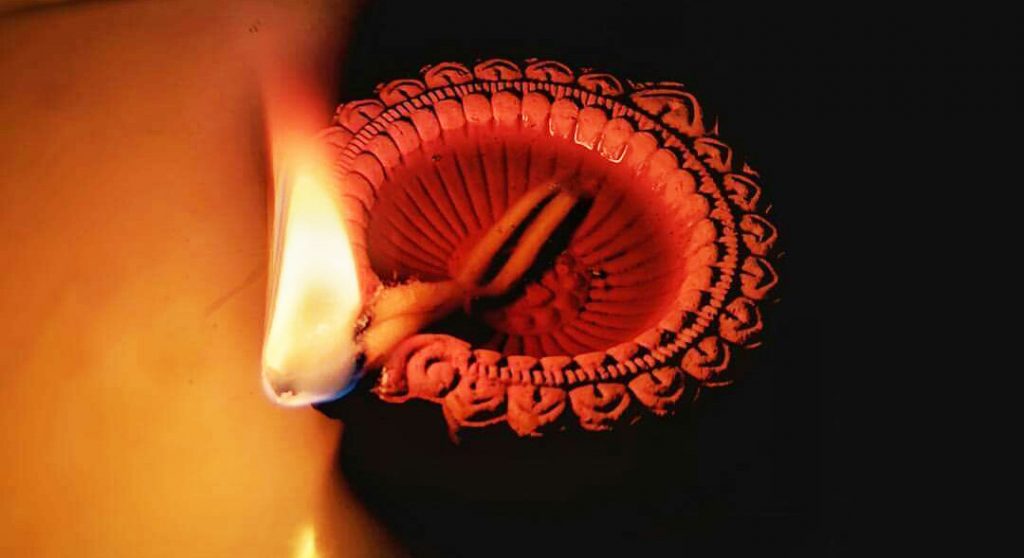This year, the winter season is being welcomed by the celebration of Diwali, the festival of lights. Of all the festivals celebrated in the Indian subcontinent, Diwali is regarded as one of the happiest holidays with extensive preparations. Diwali, or Deepavali, is a Hindu festival celebrated every year at the end of the fall season, typically in the end of October or the beginning of November. It signifies the victory of good over evil, of hope over despair. According to the Hindu epic of Ramayana, the festival signifies the return of Lord Ram to his city of Ahyodhya after the defeat of the demon Ravan.
The festive celebrations traditionally extend over a period of five days. The days of the festival vary according to the auspicious days in the lunar calendar and are eighteen days after the festival of Dasara. Cleaning, renovating and decorating of houses, public offices and living spaces are a part of the tradition of this festival signifying the welcome of the God-king and the welcome of prosperity and bliss in the society. On the nights of Diwali, people dress up in new clothes, light up diyas inside and outside their houses, participate in various family poojas and exchange gifts and sweets to honor and celebrate the return of Lord Ram, his wife Sita, his brother Lakshman and his follower Hanuman after ending the exile of fourteen years. Diwali also announces the return of the Pandava brothers according to the epic of Mahabharata.
Typically, the festive days and rituals begin with Dhanatrayodashi. It is known as the day when the message of the victory of Lord Ram reached his masses and the birth of Dhanvantari, the goddess of health and healing. Fireworks are often followed by the recitation of holy hymns before the break of dawn, and the entrances are decorated with Rangoli. The second day is known as Narak Chaturdashi, which is the fourteenth day of the lunar month Kartik, signifying the death of the daemon Narkasur, the embodiment of chaos.
The third day is the most important and linked with the celebration of Lakshmi, the goddess of wealth and the wife of Lord Vishnu, the guardian of life in the universe. It is also regarded as the birth of goddess Lakshmi, who is venerated as the source of prosperity and who arose after the churning of the cosmic ocean according to ancient scriptures. The Pooja and the rituals are hosted in the evening with offerings made to Ganpati, the god of good beginnings and remover of obstacles, the goddess Saraswati, the embodiment of knowledge, literature and learning, and Kuber, the god of wealth, management and bookkeeping. On this day, people wear new clothes adorned with jewelry. All the entrances are decorated with fresh flowers and fragrances and kept open as a sign of welcoming the good fortune and abundance.
This day is considered to be the best day for shopping, especially for gold, new garments and equipment. Women in the family are considered the deity of all the rituals, as the embodiment of the good fortune and prosperity of the household. The fourth day, known as Padwa, celebrates the love and the special bond between spouses. This day is also considered the beginning of the new financial year for all businesses. The final day is Bhai Dooj, the jamboree of sister-brother loving relationships. This day emphasizes the lifelong bond between siblings.
These five days are regarded as the most auspicious days in the Hindu religion. People bathe with fragrant oils and salts, begin their day before the sunrise and feast with their loved ones. The dark nights of autumn are lit with lights and people get together and celebrate peace. The decoration of lights commences with colorful lanterns and a distribution of sweets. Special types of food are made for this festival which include Chakali, a spiral-shaped, pretzel-like snack typically made from rice flour, Ladoo, which are sphere-shaped sweets made of minced dough and sugar that usually include various dry fruits and condiments, Chiwda which is a spicy mixture of rice flakes, fried onion and garlic, curry leaves, peanuts, fried lentils and some spices and many other mouthwatering dishes.
This festival is a major celebration of flavors with feasts as well as a festival of emotions which brings family and friends closer every year. This year, the Diwali Night is being hosted by the Indian Students Association on Nov 11. Anyone interested can be a part of the celebrations and can contribute to the preparations by finding the ISA page on the student involvement link, registering at room 106 in the MUB or emailing isacomm@mtu.edu.





